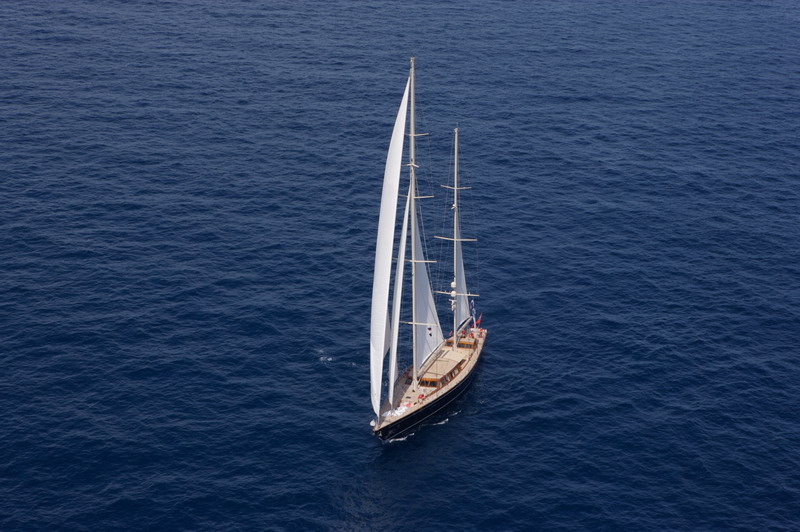The concept of sailing on the open water with nothing but two sails, a compass, and a map is completely foreign to the average land lover. But to the sailor, being out on the open water is everything. There is little need for land when you have plenty of open water, a bit of wind, and the majestic blue sky beckoning you to continue on.
Such was the case for the crew of the Dreamcatcher, a yacht manned by a team of 10 sailors under the age of 24. They won the Class 5 Division of the 51st Newport to Bermuda Race in June 2018. Doing so was no small feat. The young crew had to rely on their sailing courses in the middle of the ocean with no land in sight.
Being hundreds of miles offshore can be simultaneously exhilarating and terrifying. Imagine sailing from Newport to Bermuda, a journey of more than 630 miles, over several days. The majority of the trip is spent on open water far enough from land that terra firma cannot be seen. If something goes wrong, it is just you and your mates relying on your training to stay alive.
-
Sailing and Navigation
Sailing races held around the world are designed to put sailors to the test. Those with the best skills generally come out on top. One of those skills, as demonstrated by the Newport to Bermuda race, is navigation. Successfully navigating a sailing vessel across 600 miles of open water is not as easy as it sounds.
When you and I get in a car, we have an abundance of resources that we can use to get to the desired destination. There are street signs, landmarks, and even GPS systems that can tell us to turn left or right.
Sailors have no landmarks. They have no signs to tell them which way to turn. They have only a few basic navigational tools, the training received in sailing school, and whatever amount of experience they have gained over the years. They use their limited resources to find their way all the while dealing with wind direction, tacking, and the points of sail.
Every crew has a navigator responsible for getting the vessel to its final destination. That individual shoulders a tremendous amount of responsibility from start to finish. Imagine what it must have been like for the navigators assigned to exploration vessels hundreds of years ago, when they didn’t have the luxury of satellite imagery and GPS.
-
The Importance of Sailing Courses
There is, of course, a lot more to sailing than just navigation. The amount of knowledge and skill required to be an excellent sailor incorporates everything from physics to geometry and meteorology. Quality sailing courses offered by training companies like NauticEd are a vital component in becoming an accomplished sailor.
The crew of the Dreamcatcher won the June race because of excellent training, a very good captain, and a commitment to working hard to get the job done. But even the crew admitted that they still had a lot to learn in the weeks leading up to the race. Their sailing courses had given them a comprehensive understanding of sailing principles, but it was their experienced captain who schooled them in the specifics of that particular race.
Dreamcatcher and her crew deserve all the credit in the world for winning the 51st Newport to Bermuda race. A little bit of credit should also go to those dedicated sailors who trained the crew how to sail when no land is in sight.

